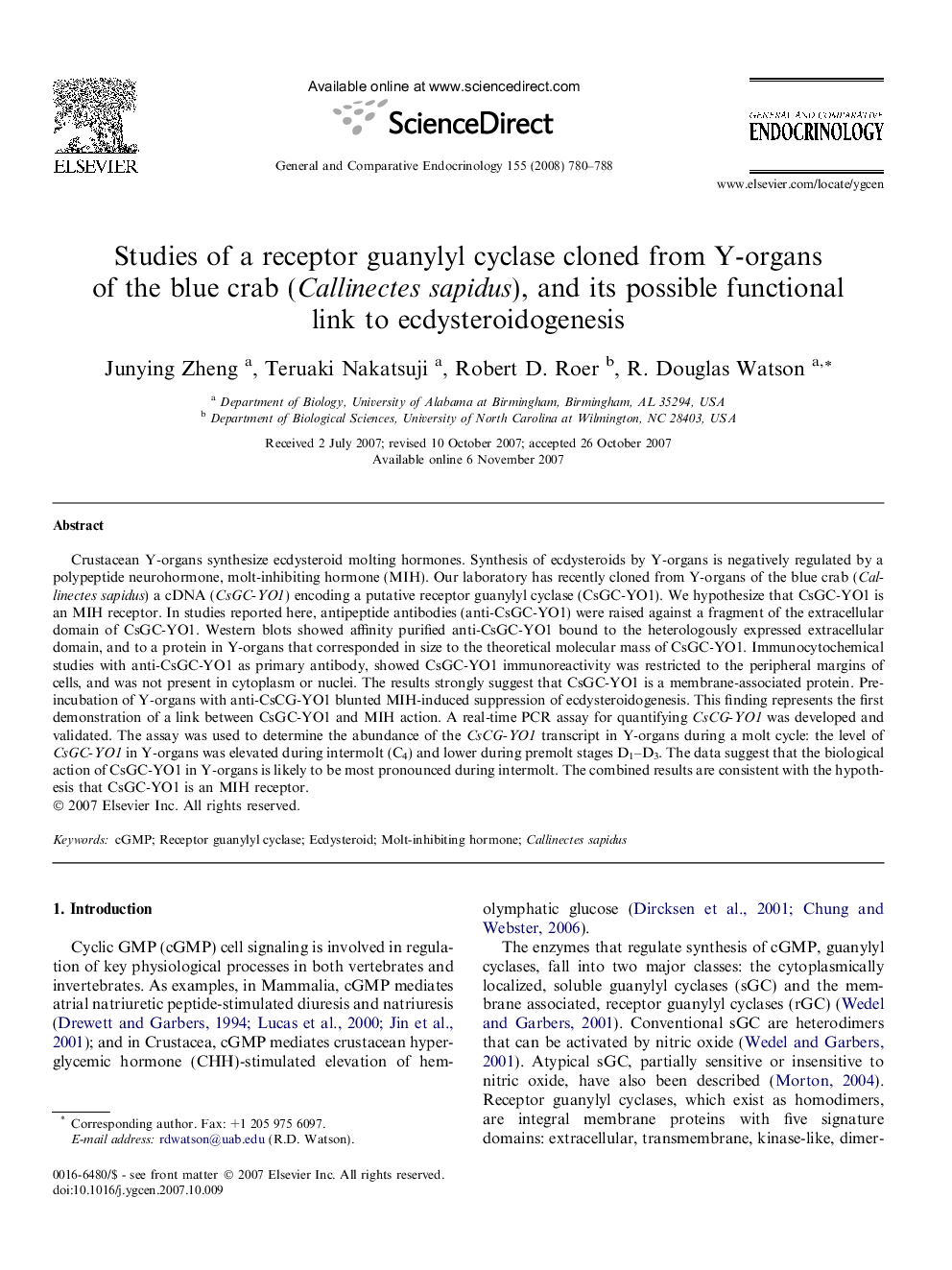| کد مقاله | کد نشریه | سال انتشار | مقاله انگلیسی | نسخه تمام متن |
|---|---|---|---|---|
| 2802063 | 1156185 | 2008 | 9 صفحه PDF | دانلود رایگان |

Crustacean Y-organs synthesize ecdysteroid molting hormones. Synthesis of ecdysteroids by Y-organs is negatively regulated by a polypeptide neurohormone, molt-inhibiting hormone (MIH). Our laboratory has recently cloned from Y-organs of the blue crab (Callinectes sapidus) a cDNA (CsGC-YO1) encoding a putative receptor guanylyl cyclase (CsGC-YO1). We hypothesize that CsGC-YO1 is an MIH receptor. In studies reported here, antipeptide antibodies (anti-CsGC-YO1) were raised against a fragment of the extracellular domain of CsGC-YO1. Western blots showed affinity purified anti-CsGC-YO1 bound to the heterologously expressed extracellular domain, and to a protein in Y-organs that corresponded in size to the theoretical molecular mass of CsGC-YO1. Immunocytochemical studies with anti-CsGC-YO1 as primary antibody, showed CsGC-YO1 immunoreactivity was restricted to the peripheral margins of cells, and was not present in cytoplasm or nuclei. The results strongly suggest that CsGC-YO1 is a membrane-associated protein. Preincubation of Y-organs with anti-CsCG-YO1 blunted MIH-induced suppression of ecdysteroidogenesis. This finding represents the first demonstration of a link between CsGC-YO1 and MIH action. A real-time PCR assay for quantifying CsCG-YO1 was developed and validated. The assay was used to determine the abundance of the CsCG-YO1 transcript in Y-organs during a molt cycle: the level of CsGC-YO1 in Y-organs was elevated during intermolt (C4) and lower during premolt stages D1–D3. The data suggest that the biological action of CsGC-YO1 in Y-organs is likely to be most pronounced during intermolt. The combined results are consistent with the hypothesis that CsGC-YO1 is an MIH receptor.
Journal: General and Comparative Endocrinology - Volume 155, Issue 3, 1 February 2008, Pages 780–788